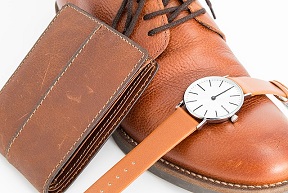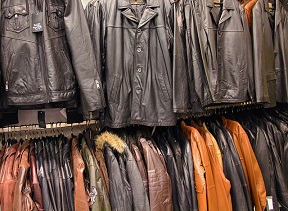Conventional leather is an attractively priced and sought-after consumer good. But leather production has important negative environmental and social consequences. Animals often live in harsh conditions; the sector uses much land and emits a lot of greenhouse gases. Preparing the skins causes a lot of chemical waste and endangers many workers. There is a growing demand for alternative leathers that don’t carry with them such negative effects.

Options for alternative leathers
The global leather goods market amounts to $ 400 billion, so there’s a lot of room for alternatives. Lux Research, the Boston-based consultancy company, devoted a report to the rising industries that could fulfil this promise. With the growing importance of sustainability, they write, there is a need for leather materials that are sustainable but do not sacrifice performance. Lux Research classifies emerging alternative leathers into four segments:
– Cell-based/cultured leathers – Collagen-based leather from yeast fermentation; bacterial cellulose; stem cell and tissue engineering
– Mycelium-based leathers – Pressing mycelium (fibrous root structure of mushrooms) into a mat; can alter growth conditions to yield different qualities
– By-product-based leathers – By-products from the food industry, e.g., grapes, pineapples, mangos, or fish; grown feedstocks like cacti
– Other leather innovations – Miscellaneous leather technologies, including CO2-derived, bio-based, and recycled leather
Of these, cell-based leathers hold promise for substituting conventional leather in high-end applications. But so far, they are mainly lab-scale products. Nevertheless, in the long run they and mycelium-based leathers hold a promise for being able to disrupt the incumbent leather industry.
Cell-based/cultured leathers
Several companies developing these alternative leathers use collagen as their resource, the protein that gives incumbent cow leather its strength and stretch. Others build up their material from cells or even from cellulose. These materials feel the most like animal leather, they can be matured and tanned similarly to incumbent leathers. But producers of the new cultured leathers have the advantage that they can tweak properties by altering the molecular structure of the cells or of the collagen network; as well as strength and thickness. Lux judges that these products will be suitable for high-end leather applications; but they are still in the lab stage.

Mycelium-based leathers
These alternative leathers are made from mycelium, the fibrous root structure of mushrooms, grown on sawdust or agricultural waste. The producers then press the mycelium into a thick mat. On treatment with mild acids, alcohols, and dyes, the resulting product resembles leather. Growth conditions can be altered to yield different mat qualities. The process takes several weeks. Lux judges that scaling fungi is a growth barrier to the sector. Still, some companies clearly make progress.
Leathers based on by-products and biomass
These alternative leathers are characterized by relatively low costs of production and ease of manufacturing. But if their feedstock is a waste – like pineapple and mango waste – production can only grow as far as waste production allows. In this respect, waste from grapes offers better opportunities. An alternative feedstock is cacti, scalable as required. Lux judges that by-product-based leathers are in introductory stages. So far, they lack performance compared to incumbent cow leather.
Other innovations
Other innovations tackle performance and sustainability in different ways. Among these technologies are PHA from CO2, gelatine, and recycled leather. Existing mock leather is often made from bio-based polyurethane; however, leathers from PHA are an emerging technology. New companies claim improved durability and strength over older technologies. Lux judges many of the products in this category to wear and tear rather easily.
The quest for sustainability is getting stronger
The leather market is large and diverse. The bulk of the demand for alternative leathers will still be, according to Lux, for products that match cow-based leather in performance and feel. And they judge that of the alternatives discussed, only products based on tissue engineering, for instance from collagen, offer truly high quality. But it will take some time for these products to come to the market at good prices. In the meantime, mycelium and by-product-based leathers may offer a good solution. On the other hand, the quest for sustainability is getting stronger. As alternative leathers improve their performance, disruption of the existing industry is becoming more than imaginary. The report summarizes: ‘the ideal time to invest in alternative leathers is now’.
Interesting? Then also read:
Vegan leather for sustainable fashion
Biobased leather
New materials as a source of inspiration for the fashion industry
